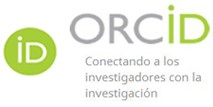The impact of using GeoGebra on learning plane geometry: A quasi-experimental study with architecture students
DOI:
https://doi.org/10.62697/rmiie.v4i3.224Keywords:
GeoGebra, plane geometry, constructivist learning, educational technology, architecture, spatial visualizationAbstract
The objective of this work is to evaluate the impact of GeoGebra on plane geometry learning in Architecture students through a controlled quasi-experimental study. A quasi-experimental design was implemented with 65 first-semester Architecture students from the University of Guayaquil, divided into an experimental group (n=33, with GeoGebra) and a control group (n=32, traditional method). Pre-postintervention tests, perception questionnaires, structured observations, and semi-structured interviews were applied during two academic cycles (2023-2024). The experimental group showed significant improvements in academic performance (M=78.3±8.2 vs M=70.1±9.5; t(63)=3.72, p<.001) and conceptual understanding. ANCOVA analysis confirmed the treatment effect (F(1,62)=15.43, p<.001, η²=0.20). Students demonstrated greater spatial visualization capacity, better understanding of geometric transformations and relationships between shapes. 87% perceived that GeoGebra facilitated their learning. As a result, it is obtained that GeoGebra constitutes an effective tool to significantly improve the teaching-learning of plane geometry in Architecture students, based on constructivist principles that favor dynamic visualization and deep conceptual understanding.
Downloads
References
Adelabu, F. M., Makgato, M., & Ramaligela, M. S. (2019). The importance of dynamic geometry computer software on learners' performance in geometry. Electronic Journal of e-Learning, 17(1), 52-63. https://files.eric.ed.gov/fulltext/EJ1216699.pdf
Alvarez-Matute, J. F., Garcia-Herrera, D. G., Erazo-Álvarez, C. A., & Erazo-Álvarez, J. C. (2020). GeoGebra como estrategia de enseñanza de la Matemática. EPISTEME KOINONIA, 3(6), 218-236. https://doi.org/10.35381/e.k.v3i6.827
Ausubel, D. P. (2002). Adquisición y retención del conocimiento: Una perspectiva cognoscitiva. Paidós.
Cedeño-Alcívar, J. C., & Rivadeneira-Loor, F. Y. (2023). GeoGebra como Herramienta Didáctica para la Enseñanza de la Matemática. MQRInvestigar, 7(4), 634-649. https://doi.org/10.56048/MQR20225.7.4.2023.634-649
Grisales-Aguirre, A. M. (2018). Uso de recursos TIC en la enseñanza de las matemáticas: retos y perspectivas. Entramado, 14(2), 198-214. https://doi.org/10.18041/1900-3803/entramado.2.4751
Hohenwarter, M., & Fuchs, K. J. (2005). Combination of dynamic geomtrey, algebra and calculus in the software system GeoGebra. (Ponencia). Computer Algebra Systems and Dynamic Geometry Systems in Mathematics Teaching, Proceedings of Sprout-Slecting Conference (Sarvari, Cs. Hrsg.). Bornus Nyomda-Roma, Italia.
Mzwandile, W. (2022). An exploration of preservice teachers’ use of educational technologies as visualization tools when teaching mathematics. (Tesis doctoral). University of KwaZulu-Na.
Papp-Varga, Z. (2007). GeoGebra en la enseñanza de las matemáticas. Teaching Mathematics and Computer Science, 5(2), 291-305. https://doi.org/10.5485/TMCS.2008.R010
Sánchez-Balarezo, R. W., & Borja-Andrade, A. M. (2022). Geogebra en el proceso de Enseñanza-Aprendizaje de las Matemáticas. Dominio De Las Ciencias, 8(2), 33–52. https://doi.org/10.23857/dc.v8i2.2737
Schmid, A., Koreňová, L., Cahyono, A. N., Hvorecký, J., & Lavicza, Z. (2023). Geogebra as a Constructivism Teaching Tool for Visualization Geometry Using VR and AR. E-learning, 15(20), 253-264. https://us.edu.pl/wydzial/wsne/wp-content/uploads/sites/20/Bez-kategorii/el-2023-15-20.pdf
Downloads
Published
How to Cite
Issue
Section
License
Copyright (c) 2025 Graciela Abad-Peña, Katia Lisset Fernández-Rodríguez, Alina Rodríguez-Morales, Yordenis Ramos-López

This work is licensed under a Creative Commons Attribution-NonCommercial-ShareAlike 4.0 International License.
Authors who publish in Revista Mexicana de Investigación e Intervención Educativa (RMIIE), of Universidad Pablo Latapí Sarre agree to the following terms:
1. Copyright
Authors retain unrestricted copyright to their work. Authors grant the journal the right of first publication. To this end, they assign the journal non-exclusive exploitation rights (reproduction, distribution, public communication, and transformation). Authors may enter into additional agreements for the non-exclusive distribution of the version of the work published in the journal, provided that acknowledgment of its initial publication in this journal is given.
© The authors.
2. License
The articles are published in the journal under the Creative Commons Attribution-NonCommercial-ShareAlike 4.0 International License (CC BY-NC-SA 4.0). The terms can be found at: https://creativecommons.org/licenses/by-nc-sa/4.0/deed.en
This license allows:
- Sharing: Copying and redistributing the material in any medium or format.
- Adapting: Remixing, transforming, and building upon the material.
Under the following terms:
- Attribution: You must give appropriate credit, provide a link to the license, and indicate if any changes were made. You may do this in any reasonable manner, but not in any way that suggests the licensor endorses or sponsors your use.
- NonCommercial: You may not use the material for commercial purposes.
- ShareAlike: If you remix, transform, or build upon the material, you must distribute your creation under the same license as the original work.
There are no additional restrictions. You may not apply legal terms or technological measures that legally restrict others from doing anything the license permits.












